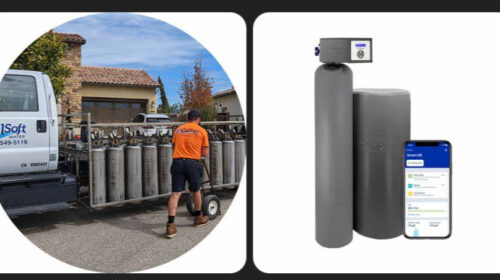Installing a whole house water filtration and softener system is a smart move — but even a high-quality system won’t perform well if it’s in the wrong spot. In this article, we’ll walk you through what to consider when choosing the best location for your setup, including tips drawn from real-world installs like the one recently completed at our LSI/SDA headquarters in La Habra Heights.
Why Location Matters
The placement of your whole house system impacts water pressure, long-term access, equipment lifespan, and even emergency preparedness. We’ve seen homeowners install complex setups in cramped spaces or fully exposed yards — only to regret it after the first maintenance task or heatwave.
The right location saves you time, money, and future headaches.
Indoor vs. Outdoor Placement
In most Southern California homes, you’ll need to choose between placing your system inside a garage, utility room, or shed — or outdoors along the home’s perimeter.
Indoor installations offer the most protection but often lack space. Wall-mounted boards (like ours, pre-assembled in a garage) can streamline installation and future service. Just be sure to account for bypass valves and pressure relief spigots.
Outdoor systems are more visible and vulnerable to weather, UV damage, and theft — but can be housed in a shed or enclosure for protection. We used a $400 Costco shed to create a discrete, protected location near our incoming water line and 120V power source.
Pro Tip: Plan Your Shed Before You Dig
A flat concrete slab makes opening shed doors and servicing your water system far easier than gravel or grass. We originally installed ours on gravel and quickly realized that minor shifting caused alignment issues with the doors. A poured concrete base will eliminate these problems — and may even extend the life of your shed.
Consider These Location Factors:
- Access to water main: Your system should be as close to the water main as possible, before the home splits off to individual fixtures.
- Drainage: Ensure you have somewhere for brine or filter discharge to drain — not near plant beds or slab foundations.
- Electricity: If you’re using a smart water softener, you’ll need a protected outlet.
- Bypass valves: Plan ahead so you can divert water around your system when servicing it.
- Future repairs: Choose a location where you can remove and replace filters, regulators, or valves without demolition.
Learn From Our Real-World Build
We used full 1″ PEX A lines, dual Culligan filters, a WATTS 25AUB pressure regulator, and custom shutoff valves — all pre-mounted on a 4×6 board that was later installed into a Costco shed near the house. This location gave us maximum utility with minimal visibility.
One key tip? Never underestimate the value of smart layout and pressure control. Our 125 PSI water supply would have destroyed cartridges and faucets without a quality pressure regulator.
Final Thoughts
The system you buy is only half the story. Where and how you install it makes all the difference in whether it performs smoothly or becomes a source of frustration.
Need help deciding the best location for your water system in Orange County or neighboring regions? Contact our team — or check out more resources below.


Leave a Reply